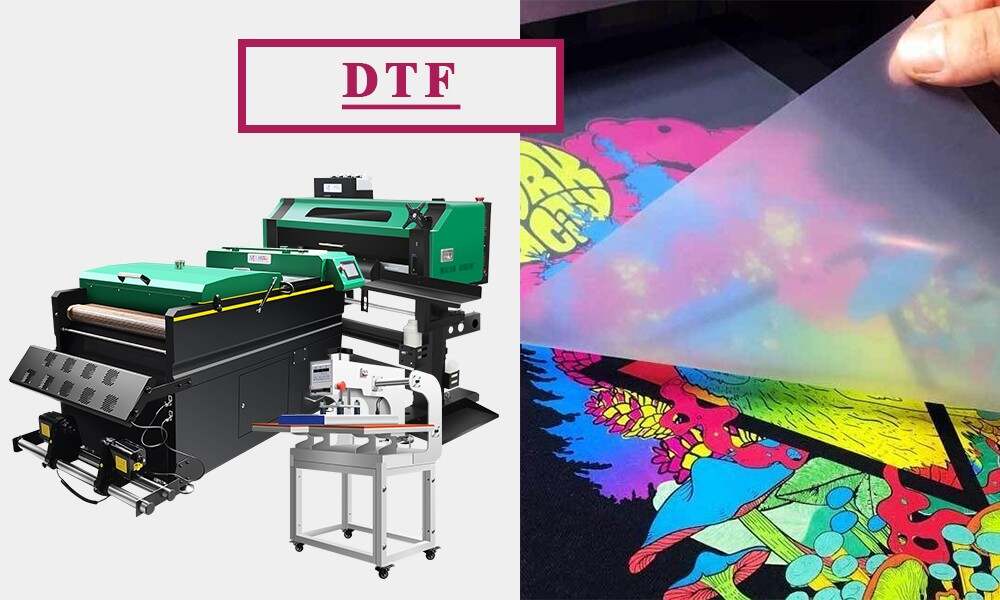Ultimate Overview to DTF Printing Strategies for Magnificent Textile Designs
Starting the journey of understanding DTF printing techniques can open a globe of possibilities for creating visually captivating fabric designs. As the fabric sector remains to develop, staying ahead of the curve with innovative printing techniques is vital. In this overview, we will discover the complex information of DTF printing, from understanding the basic essentials to unraveling progressed color strategies that can elevate your designs to brand-new elevations. Stay tuned as we explore the nuances of picking the right materials, refining the printing procedure, and getting rid of typical challenges to achieve magnificent outcomes.
Recognizing DTF Printing Essentials
DTF printing, a procedure that includes moving layouts from an unique film to fabrics making use of warm and pressure, develops the foundation of fabric printing strategies. This ingenious technique allows for high-quality, vibrant styles to be seamlessly transferred onto numerous fabrics with precision and information. The primary step in DTF printing entails developing or picking a layout that will certainly be published onto the textile. This layout is then published onto a special movie using a DTF printer, which uses details dyes or pigments to make sure shade accuracy and toughness.
The last outcome is a magnificent, durable fabric style that is cleanable, versatile, and immune to fading. Generally, recognizing the essentials of DTF printing is vital for grasping this contemporary fabric printing method.
Selecting the Right Textile Products
Having actually established the foundational concepts of DTF printing strategies for textile styles, the following vital factor to consider lies in selecting the proper fabric materials to complement this cutting-edge procedure properly. Furthermore, the stretchability of these products can fit the warmth transfer procedure involved in DTF printing without distorting the design. By picking the right textile materials, developers can maximize the potential of DTF printing to develop long-lasting and spectacular textile styles.

Grasping the Printing Refine
To stand out in DTF printing strategies for textile layouts, understanding the printing procedure is important for accomplishing regular and premium results. The temperature, stress, and duration of warmth application should be thoroughly managed to make certain proper attachment of the layout to the fabric. By refining each of these actions in the printing process, developers can continually generate stunning and resilient fabric layouts with DTF printing techniques.
Enhancing Designs With Color Techniques

Additionally, experimenting with color slopes can bring a sense of motion and fluidity to the style. By mixing colors flawlessly, a gradient impact can be attained, adding a contemporary and vibrant touch to the fabric design. Additionally, making use of shade obstructing strategies can produce bold and striking visuals by juxtaposing different solid shades in distinctive areas of the layout.
Furthermore, incorporating metal or neon colors can supply a eye-catching and distinct aspect to the fabric layout, making it stand out and emanate a sense of vibrancy. When tactically applied, these shade techniques can boost the overall aesthetic allure of fabric designs, making them much more memorable and captivating.
Troubleshooting Common DTF Printing Issues
After exploring different color strategies to enhance textile designs, it is crucial to resolve usual DTF printing problems that might emerge during the production process. One typical problem is inadequate adhesion, which can result from improper curing times or temperatures. To solve this you can try this out trouble, make certain that the healing setups are precise which the sticky used appropriates for the certain textile being printed on. One more frequent difficulty is shade incongruities, where shades might show up differently than expected. This can be triggered by inaccurate shade profiles or settings in the printing software. To tackle this, double-check the color settings and profiles to guarantee they match the designated design. In addition, issues with photo clearness and intensity can take place as a result of low-resolution pictures or incorrect printing methods. To address this, always utilize high-grade photos and adjust the printing settings for optimum clearness. By being mindful of these usual problems and applying the essential troubleshooting steps, you can boost the total top quality of your DTF printed fabric styles.
Conclusion
In final thought, grasping DTF printing methods is necessary for producing magnificent textile designs. By comprehending the basics of DTF printing, picking the ideal materials, and improving designs with shade methods, one can achieve remarkable outcomes. It is necessary to fix usual concerns that may occur during the printing procedure to ensure Clicking Here an effective outcome. With method and interest to detail, one can create special and beautiful textile designs utilizing DTF printing techniques.
DTF printing, a procedure that includes transferring styles from an unique film to fabrics making use of warmth and stress, forms the foundation of textile printing strategies.Having developed the fundamental principles of DTF printing methods for textile designs, the following vital factor to consider lies in choosing the proper textile materials to complement this cutting-edge process successfully. By selecting the right fabric products, developers can optimize the potential of DTF printing to create resilient and try this web-site sensational textile styles.
To excel in DTF printing techniques for textile styles, mastering the printing procedure is essential for accomplishing consistent and premium outcomes. DTF Printing. By developing each of these actions in the printing procedure, developers can consistently create long lasting and magnificent fabric layouts with DTF printing methods
Comments on “DTF Printing Proficiency: Boost Your Fabric Creations with Direct-to-Film Innovation”